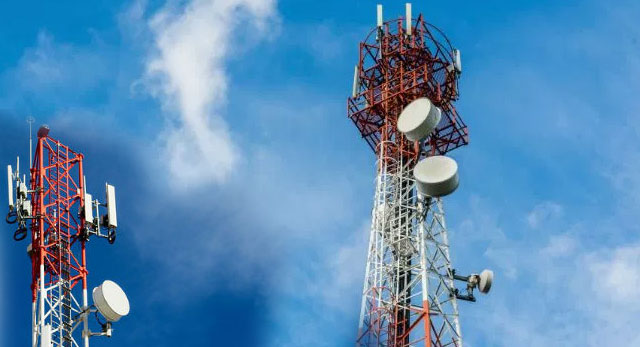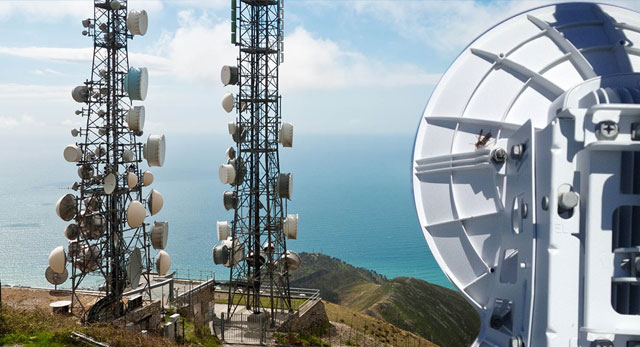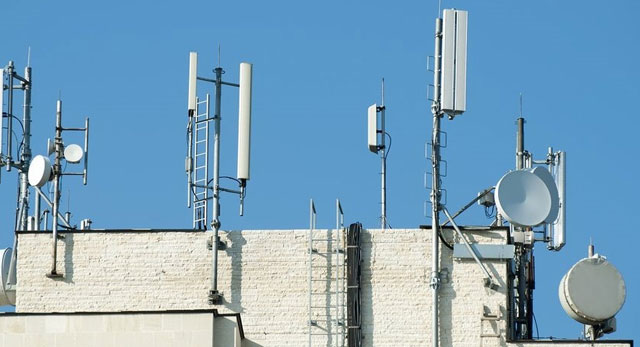“As more and more of our world becomes part of the wireless communication, we see the mobile phone becoming a central command station for everything around us”

RS Wireless Solutions
Wireless Backhaul
Historically, there have been primarily two choices in creating voice and data backhaul for an organization: leasing Telco lines or provisioning private optical fibre connections. Both present serious drawbacks in cost, deployment time, reliability, and their dependence on third-party vendors.
With the greater demand for bandwidth many organizations turn to fibre as a solution. When an optical fibre loop isn’t available, it’s tremendously expensive and difficult to install. It could take years to secure right-of-way for trenching fibre through streets or forests and can highly cost.
Point to point wireless backhaul is far easier and cheaper to deploy than fibre. Costs of running outdoor fibre can be upwards of RM 100K 350k per KM depending on the location, equipments & protection that apply.

PTP, PtMP especially point to point with licensed wireless networks can now compete with fibre, not only in price per Mbps, but in performance and reliability. Plus there are many advantages of owning a private network, in terms of security, support, and reliability.
With wireless backhaul voice and data backhaul can be achieved without the delays and costs of leasing or building a wired infrastructure. Fixed point to point wireless backhaul, point to multipoint wireless bridges, wireless mesh Network, and WiMax backhaul networks allow secure and reliable access to high-speed data, voice and video services. Wireless backhaul can be done in unlicensed wireless Ethernet bridges or licensed microwave links, also known as point to point microwave. Throughputs from 100Mbps full duplex to Gigabit Ethernet full duplex (gigabit wireless) can be achieved based on customer requirement.
Point to Point Wireless
Point to point wireless Ethernet Bridge, also known as fixed wireless backhaul, PTP wireless, or point to point microwave, is an ideal complement or replacement to leased lines and fibre. Whether the requirement is to link individual buildings, communicate between buildings, or link networks across large distances, organizations are increasingly turning to point to point wireless backhaul networks, both licensed microwave links and unlicensed wireless bridges, as the preferred solution. Point to point wireless backhaul provides several advantages:

- Increase Bandwidth – Up to Gigabit data & voice
- Extend Fibre & Ethernet Installations
- Lower cost of installation
- No recurring connection fees
- Reduce leased line dependency
- Quick installation—days instead of weeks or months
- ROI – Cost can usually be recouped in months
- Performance unaffected by environmental factors
- Advanced Security – DOD and HIPPA compliant
- 999% Reliability
Point to Multi-Point Wireless
Outdoor point to multipoint wireless backhaul systems offer today’s most flexible, economical, and easily deployed solutions for connecting multiple remote sites to the network. Point to multipoint wireless backhaul systems are ideal for interconnecting campus buildings, security systems, control systems, IP video surveillance cameras, WISP applications, integrating remote business sites, or installing last mile connections.
Point to multipoint wireless Ethernet bridges are generally in the 900MHz, 2.4 GHz, and 5GHz ranges. These systems can provide DSL equivalent up to 170+ Mbps aggregate throughput. They are generally used where bandwidth requirements are generally lower and provide great DSL/T1 replacement. The range can extend as far as 16 KM, with optimum performance in the 1.6 to 3.2 KM range.
Points to multipoint wireless backhaul systems are made up of a Base Station Unit (BSU or AP) that can communicate with multiple Subscriber Units (SU’s). Many systems can handle over 100 plus SU’s per BSU. In most cases the BSU’s provide a sector antenna beam pattern (typical is 60 degree, with some systems allowing external antenna configurations for expanding to 90 and 120 degree sector antennas). Multiple BSU’s can be installed to create a 360 degree sector (like a typical cell site configuration).


Laser FSO Wireless Link
The transmission through free space optics (FSO) is the same as for the transmission of a signal through a fibre optic link. It is an optical data, voice and video transmission system using laser light to transmit digital signals between two transceivers through the air, instead of through a fibre glass strand.
Why consider FSO Laser Links?
- Up to 10Gbps throughput
- Full Duplex operation
- Major cost savings over other technology like Optical Fibre, Copper
- Licence free operation
- Very secure data transmission with low latency
When are laser links mostly used?
- Organizations looking to create a LAN across multiple buildings on the same site
- Organizations looking to reduce the cost of existing leased lines
- In very secure environments such as military establishments
- Emergency link back up for microwave links
- In organizations that require an high throughput of data up to 10Gbps
- In high density areas where FSO is always Radio Frequency interference free
- Budget constrained projects
When to consider opting for microwave over laser?
- Areas suffering from severe fog and rain
- Moving buildings
- Pole mounting fixtures
- Line of sight distance more than 5km
Is laser right solution for you?
If you are looking for the simple answer; why not give RSnet a call at +60169102677 an expert from RSnet are happy to advise on the best solution, no pressure, no sales pitch.

